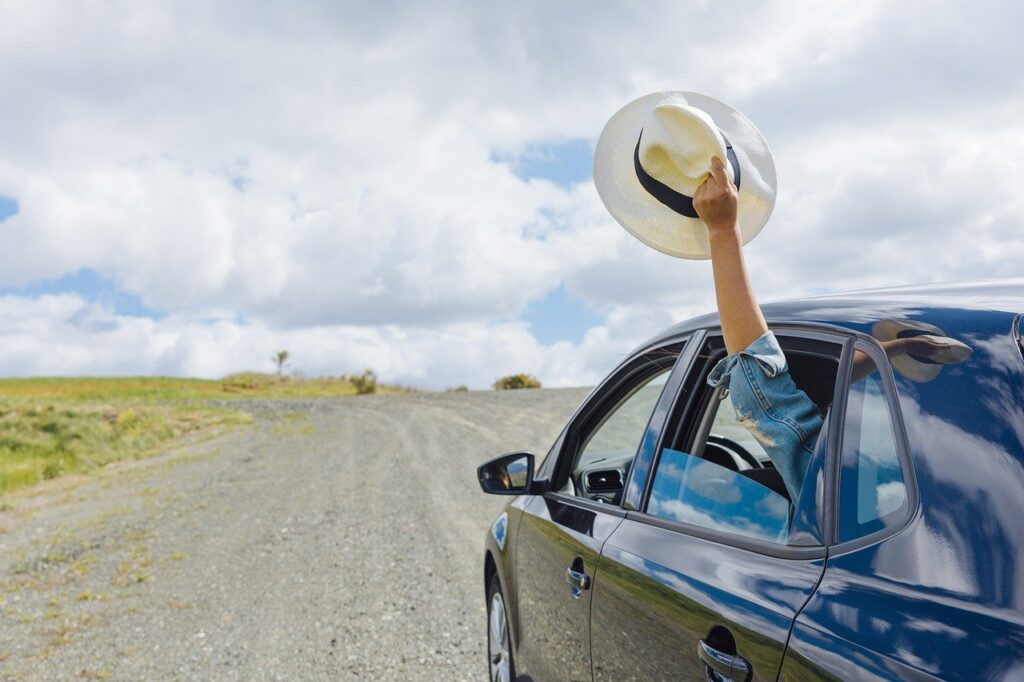



Summary
This blog hopefully gives some insight to someone who is debating whether to lease/rent a car or take public transportation during their explorations. There are advantages and disadvantages to both. Which one is better depends on the situation and what a person wants to get out of their adventure. This blog is based on our experience while driving in Western Europe.
Background Information
Since our retirement, we have been to Europe twice, both visiting the continent a day or two shy of the maximum allowed stay of 90 days in the Schengen area. On our first trip we drove mainly in Switzerland and Germany and dribbled a couple of days in France and northern Italy (Lake Como area) for around 30 some days and took public transportation the rest of the trip. Second time in Europe, we drove about 80 some days mainly in Austria, about 10 days in the Dolomites area of Northern Italy and just over three weeks in Southern Spain.
Advantages and Disadvantages
I’ll go over the advantages and disadvantages of driving. There is no need to go over the advantages and disadvantages of public transportation as the advantage of one becomes the disadvantage of the other.
Driving Advantages
1. The main advantage of car travel is freedom. A car allowed us to set our own schedule at our own pace. We began our adventures whenever we wanted and stopped and took photos wherever and whenever we wanted. Being a senior where Number 1 call of nature occurs more often, a car provided us that additional freedom to attend to this need whenever it was convenient to pull over to the side of the road.
2. The second advantage is the overall cost. Traveling by car, in my opinion, is cheaper than by public transportation, especially if traveling as a group. A car afforded us to go grocery shopping and transport those groceries from one accommodation to the next. If we stayed in an accommodation that was equipped with a kitchen, we were able to save money by cooking our own meal instead of dropping €15 to €20 per person every time we ate out (we were surprised how much a half liter of bottled water costs at restaurants).
3. Third advantage is that our choice of accommodations are not limited to hotels or AirBnB’s near public transportation stops. A car allowed us to stay in some hard to reach but unique accommodations.
4. Probably the last advantage of car travel is that we used our time efficiently. A car allowed us to go to the next destination without waiting, unlike public transportation. I remember waiting over an hour in close to freezing temperature for the train back to town while we were in St. Moritz, Switzerland. We had to wait that long because the last cable car down the mountain was an hour ahead of the train’s scheduled stop.
Driving Disadvantages
1. First disadvantage is the stress that comes with driving in a foreign land. We drove through some of the narrowest streets that we have ever seen. There were a lot of second guessing our decision to drive. There were streets where only one car could fit and we had to back-up to give way to the oncoming traffic. I felt I left some of my manhood in 2019 when I first drove in Europe, especially when the oncoming traffic was a bus or truck on a two lane undivided road with a drop off to the side of the road. It was certainly nerve racking. However, it was not as bad the second time around in 2021.
2. Second disadvantage are the traffic signs and symbols. We tried to mitigate this stress by browsing the Internet before our trip for the common traffic signs of the countries we were going to visit. However, no amount of preparation will cover everything as we encountered signs with words we did not understand. And once we passed that worded sign that we had no clue what it meant, we just crossed our fingers and hoped that it’s not a big deal. It was very helpful that we had an international cell phone data plan as it allowed my wife to Google translate the words into English while I focused on driving.
3. Third disadvantage is parking, especially in a popular place. Parking can either be difficult to find or expensive. We were parked in an underground parking lot in Salzburg, Austria and ended up paying about €17 for four hours. Once we found a parking place, we always find ourselves either having to translate the parking rules or ask somebody local. Almost always, we had to ask somebody for help, whether paying at the automatic parking machine or trying to find out if we can park in an area. In either case, knowing “excuse me”, “can you help me please” and “do you speak English?” in the local language becomes invaluable. I always find that the locals are more approachable and helpful if I blur out those words in their language as opposed to asking them in English at the start (to me assuming that somebody speaks English in a non-English speaking country is both presumptive and arrogant).
4. Last disadvantage is that all the cars I drove had manual transmissions which to my understanding is fairly common in Europe and totally opposite in the states. One of our rental vehicles was a six speed transmission with a reverse that goes all the way to the left and down. However, we could not put in reverse no matter how much we tried. It always went to second gear. Lucky for us, someone walking by asked if we needed help and showed us that we had to lift the gear shifter cover up to allow the shifter to slide into reverse. With this lesson, we made sure on our next car rental that we went through all the gears before we drove off the car rental parking lot. Also, the first time we drove in Europe, we were surprised that the car shuts down all of a sudden when we stopped and in neutral. It’s common, if not standard in Europe. It automatically starts when I stepped on the clutch.
Final Thoughts
One analogy I can use in driving in Europe is having a teenage son or daughter. It’s great when everybody is in agreement and helping each other. But when things are not in agreement, it can be a royal pain in the rear.
For us, a car is a must if we are exploring places that are off the beaten path or not accessible by public transportation. A car has the added benefit of shortening the distance that we have to carry or drag our luggage. So a car becomes necessary for somebody who brings everything but the kitchen sink. Also, if our time is limited (as in the usual 2 week US vacation given by employers), then a car allowed us to make the most out of this limited time.
Public transportation is all we needed if our explorations was limited to large towns and cities (or it could be looked at as that is all we could explore without a car). However, we always checked first the travel times from one town to the next in our itinerary using Google Maps. We sometime discover that the travel times are longer than we expected. This resulted in having to drop a town or two from our itinerary. When we were planning our Spain itinerary, we found out that it would take more than seven hours using three separate trains to travel from Benidorm to Grenada. This made us decide to rent a car instead despite the fact that most accommodations in Spain do not have on site parking.
Finally, there are places where public transportation is the only smart option. When we were in Madrid, Spain, we left our car at the hotel and just took the subway to the city center. We drove once in Madrid and we said never again. It was just a horrible experience.
Related Blogs
Driving in Austria. Driving in Italy. Driving in Spain. Lease Vs Rent. Car Navigation.
